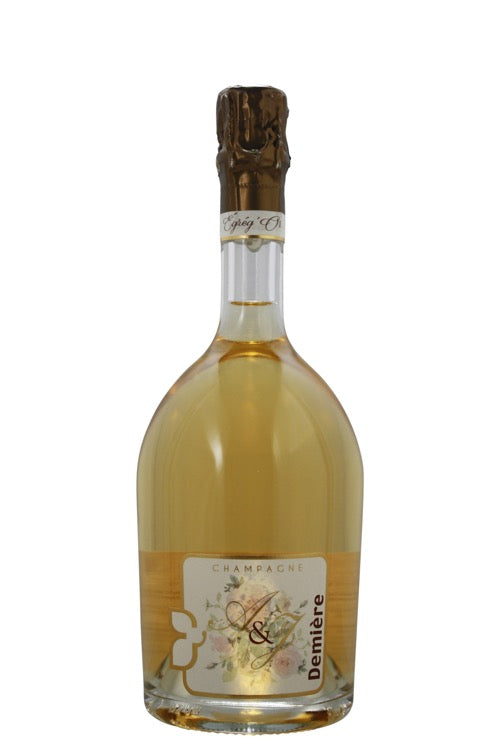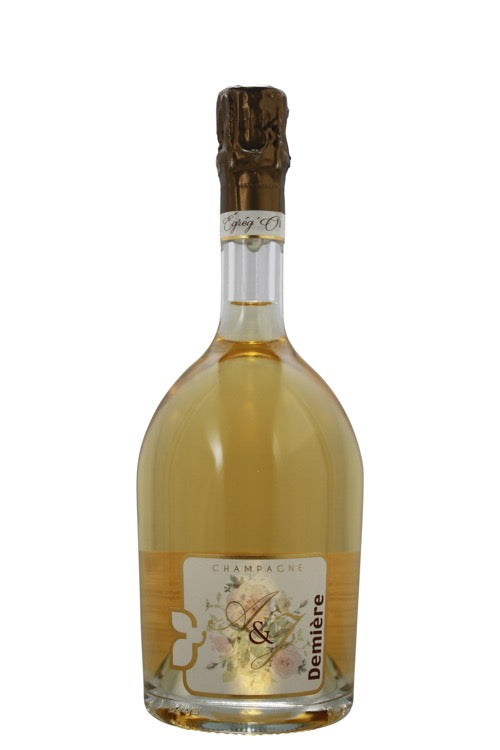1
/
of
1
Demiere Egrég'Or Brut - NV (1.5L)
Demiere Egrég'Or Brut - NV (1.5L)
Regular price
$249.99
Sale price
$249.99
Regular price
$289.99
Unit price
/
per
Made from 100% Pinot Meunier, it is bright and golden yellow in color with very fine bubbles and a delicate mousse. The nose is very powerful with great complexity, offering aromas of peach, cherry, and plum. Honey and candied fruit aromas follow. Flavors of toast, brioche, and with hints vanilla, it is well balanced with a long, luxurious finish. - Winemaker's Notes
Availability:
1 In Stock
$25 Shipping on Orders +$299
Couldn't load pickup availability
Share :

- varietal
- Region
- Sub - Region
- Type
- Reviews
Product Review
Made from 100% Pinot Meunier, on the eye it is bright and golden yellow. Very fine bubbles and a delicate mousse. The nose is very powerful with great complexity, offering aromas of peach, cherry, and plum. Honey and candied fruit aromas follow. Flavors of toast, brioche, and nice balance and length with hints vanilla.
Pinot Meunier is the Champagne regions most treasured and popular variety. Its success is due to the fact that it buds late and ripens early. On such a northerly latitude where the climate is so marginal, a variety that is more resilient and less susceptible to frost is useful. Some attribute Pinot Meunier to making a more rustic wine compared to those made from Pinot Noir or Chardonnay. However like any variety, with the right treatment it is very capable of producing refined wines showing appealing fruitiness in youth and with age developing a complex nutty and mushroom quality. Krug who use a high proportion of the variety demonstrate very well the grapes potential for producing fine age-worthy wines.
Champagne was the first region in the world to start producing sparkling wine on a commercial level and where most New World producers look to for inspiration. Producing a fizzy wine often occurred by accident, and was, for a long time seen as a detriment with producers going to great lengths to prevent a second fermentation. Due to the marginal climate the temperature in the fall would often dip, sedating the yeasts before all the sugars were converted into alcohol. When the region warmed up the following spring the unfermented sugars occasionally spurred on a second fermentation trapping the carbon dioxide (a by-product) in the bottle . It wasn’t until the turn of the 19th century that sparkling wine became popular and desirable. The region is split into four regions. Three are adjoining: The Montagne de Rheims to the north, the Cotes de Blanc to the south, and the Marne Valley in between. The fourth and separate region is the Cote des Bar in the Aube valley, some 70 miles south of Epernay.
NULL
Sparkling wine is a wine with high levels of carbon dioxide in it making it bubble. The carbon dioxide is a result of natural fermentation, either in a bottle or a specially designed tank, or as a result of carbon dioxide injection.Sparkling wine is usually white or rosé but there are many examples of red sparkling wines. The sweetness of sparkling wine can range from very dry "brut" styles to sweeter "doux" varieties.When one thinks of sparkling wine they usually think of Champagne, but this wine is exclusively produced in the Champagne region of France and many sparkling wines are produced in other countries and regions. Most countries reserve the word Champagne for a specific type from the Champagne region of France. The French terms "Mousseux" or "Crémant" are used to refer to sparkling wine not made in the Champagne region. German and Austrian sparkling wines are called Sekt. The United States is a significant producer of sparkling wine with producers in numerous states. Recently the United Kingdom, which produced some of the earliest examples of sparkling wine, has started producing sparkling wines again.


